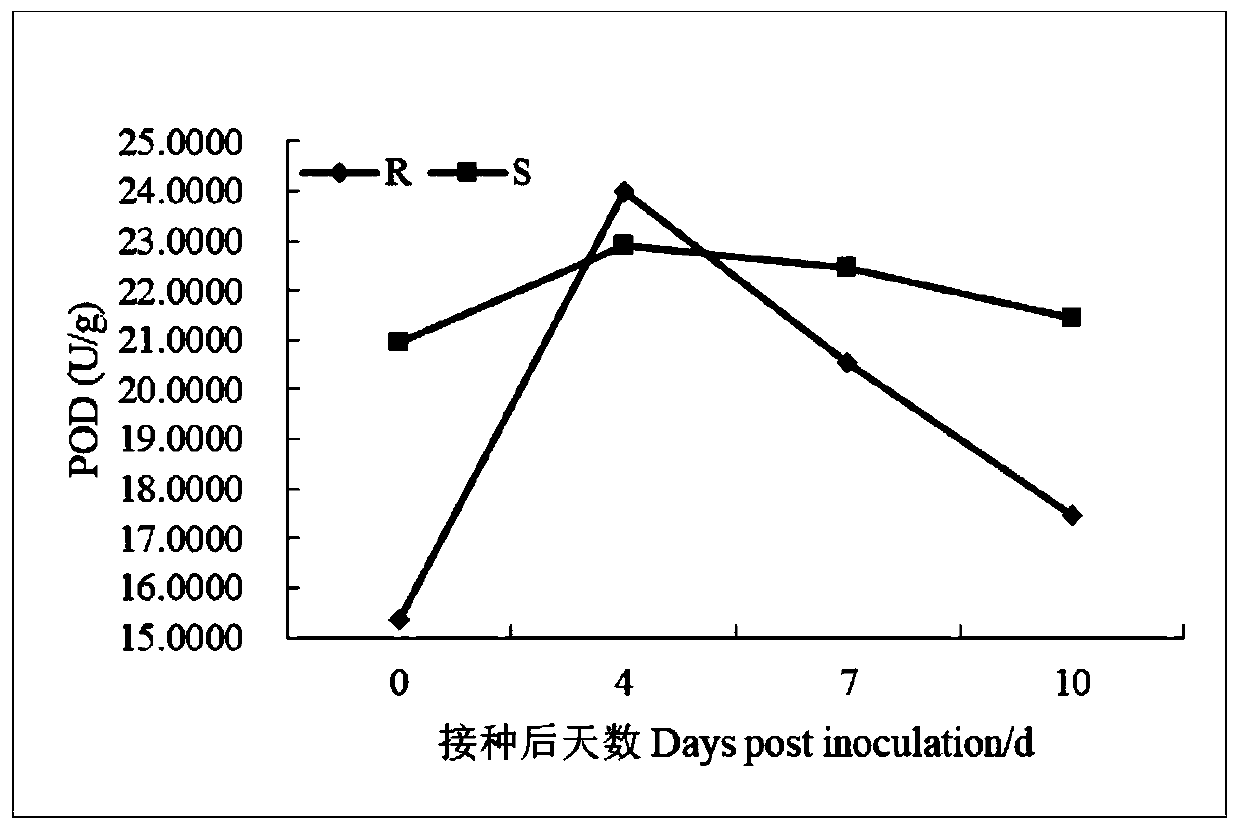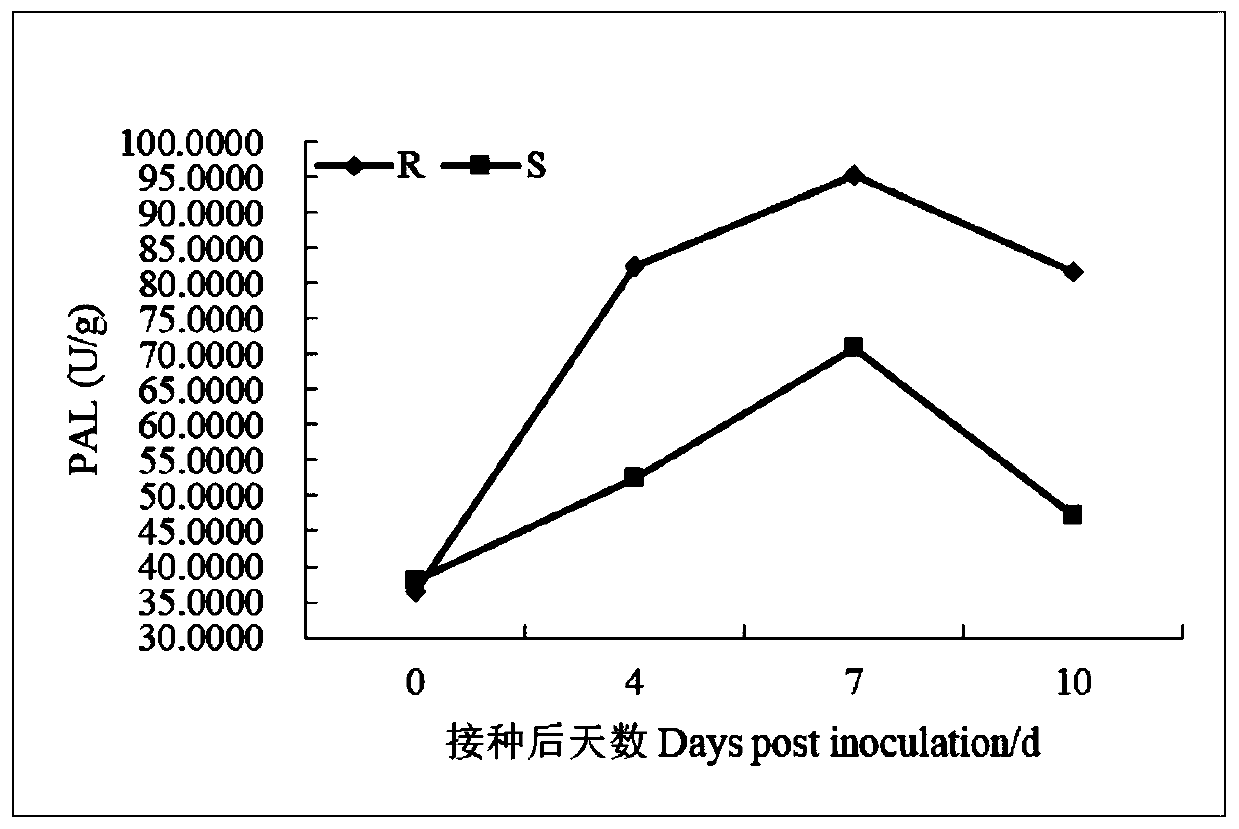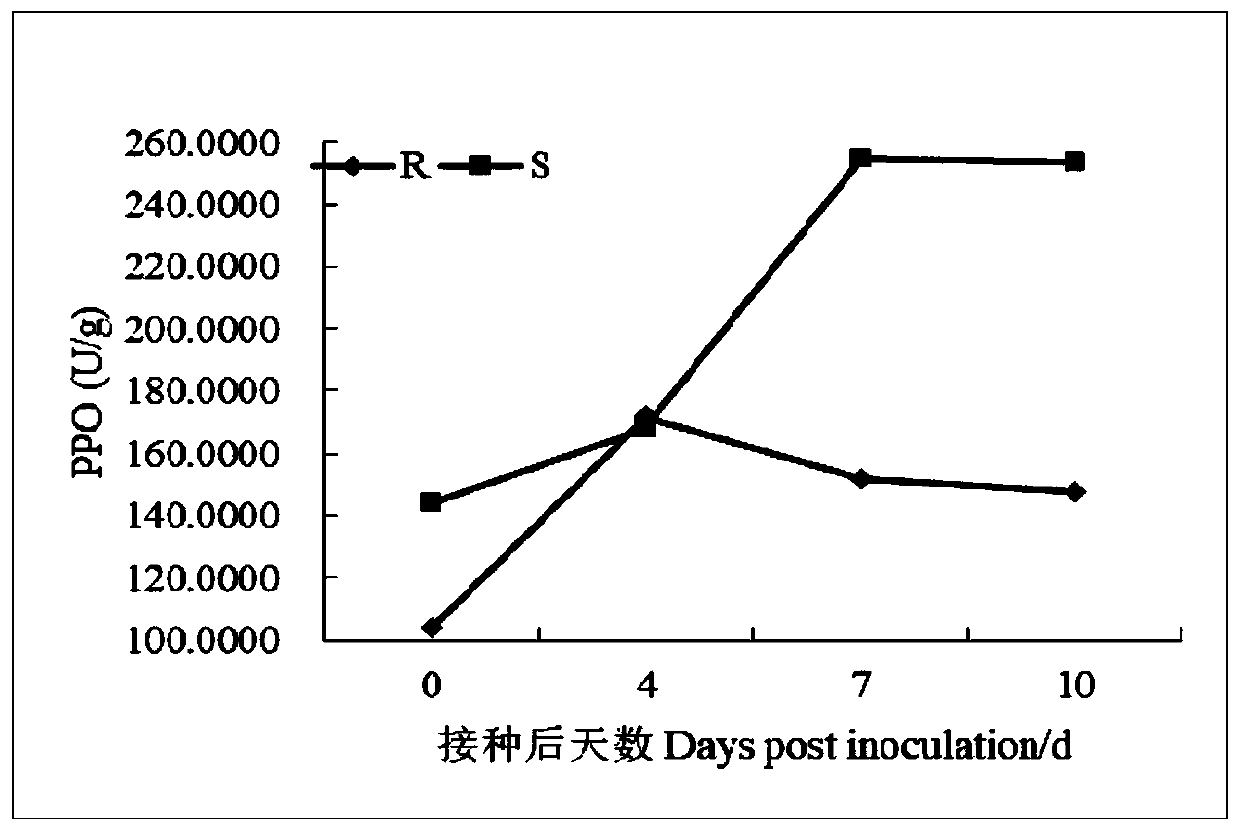Breeding method of tomatoes resistant to yellow leaf curl virus disease
A technology of yellow leaf curl virus and tomato, which is applied in the field of tomato breeding, can solve the problems of high cost, long cycle and complicated method, and achieve the effect of reducing time and cost, simple method and easy to master
- Summary
- Abstract
- Description
- Claims
- Application Information
AI Technical Summary
Problems solved by technology
Method used
Image
Examples
Embodiment 1
[0019] (1) More than 80 copies of materials with excellent comprehensive properties were imported from home and abroad through seed collection and branch collection. The above materials were continuously selfed to obtain a variety of tomato materials with unknown disease resistance.
[0020] Through the above process, a plurality of tomato materials are obtained, wherein the tomato materials are as follows:
[0021] 711-2-35-19-3-5-1: In the spring of 2005, the tomato variety 'Num711' with mesocarp, storage and transportation, and red fruit was introduced from Nunhem in the Netherlands. After 3 generations of self-segregation and screening, 711 was selected -2-35-19 strain, in the second half of 2006, tomato yellow leaf curl virus broke out in the tomato breeding base of our institute. It is considered that there may be a gene for resistance to yellow leaf curl virus disease, and then it is screened by self-seeding for four consecutive generations, and the resistance identifi...
PUM
 Login to View More
Login to View More Abstract
Description
Claims
Application Information
 Login to View More
Login to View More - R&D
- Intellectual Property
- Life Sciences
- Materials
- Tech Scout
- Unparalleled Data Quality
- Higher Quality Content
- 60% Fewer Hallucinations
Browse by: Latest US Patents, China's latest patents, Technical Efficacy Thesaurus, Application Domain, Technology Topic, Popular Technical Reports.
© 2025 PatSnap. All rights reserved.Legal|Privacy policy|Modern Slavery Act Transparency Statement|Sitemap|About US| Contact US: help@patsnap.com



